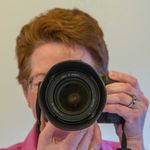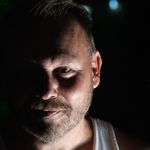 Adobe Community
Adobe Community
Copy link to clipboard
Copied
 1 Correct answer
1 Correct answer
1) black haloes around the edge of the beak, eagle's head, tree branches, possibly from oversharpening, blownout spots in the white feathers
2) very noticeable chromatic aberration on the seagull
3) poor focus in the bird's head and excessive noise
if you zoom in to 100-200% and inspect your images carefully the flaws are readily apparent.
Copy link to clipboard
Copied
1) black haloes around the edge of the beak, eagle's head, tree branches, possibly from oversharpening, blownout spots in the white feathers
2) very noticeable chromatic aberration on the seagull
3) poor focus in the bird's head and excessive noise
if you zoom in to 100-200% and inspect your images carefully the flaws are readily apparent.
Copy link to clipboard
Copied
thank you for the CC
Copy link to clipboard
Copied
Focus, chromatic aberation and just plain over post processing.
Copy link to clipboard
Copied
Resultados de traducción
Copy link to clipboard
Copied
I agree but do welcome the constructive critisism. Most photos have flaws and somethimes I over process to correct them.
Copy link to clipboard
Copied
@PepeCastro you have a wonderful outlook on life, but sadly a lot of customers are not as understanding as you are. They really are looking for technically perfect photos, regardless of the challenges it takes for the photographer to get that photo.
Rob R, Photographer
Copy link to clipboard
Copied
Of course a perfect photo does not exist, but Buyers certainly cull through available images in the Stock databases to find the best available. None of these would have been selected in their current condition.
Copy link to clipboard
Copied
I personally would not look to see if there are chromatic aberrations at the edges of branches. I would stop at the important thing in the majesty of that bald eagle...
By @PepeCastro
=======
Easy for you to say. But not when one works in the print industry. Even small artifacts can ruin a production run and at great financial costs. Remember, Stock images are used by professionals for COMMERCIAL projects where the standards are much, much higher. 😉
Copy link to clipboard
Copied
I was not going to answer, it is not worth spending a keyboard for this, but... in the end I have decided and I expose my point of view. It is true that a photo and any work or artistic work have the obligation to achieve the closest thing to perfection, of course if I am photographing a product or a model in a studio where I have all the materials, cameras, filters, flashlights and I can check all the diaphragms and the necessary foci with the camera on a stable tripod, if that photographer takes out an aberration or a blur or overexposes etc. Well, if it is true that it should not be admitted, but if the photographer is out in the open in the middle of the field with the camera on an unstable tripod photographing an unpredictable object or animal, without knowing the time he will have before it is an animal he leaves, you cannot ask for the same performance since he will only have one opportunity to take the photo and that happens to all those who are dedicated to this section of photography, that is why I give my complete approval to these photos and how I consider that this error is much less than the total result. I believe that these photos should be included, not because of frivolity or goodwill. Would you reject the photo of the burned girl from Vietnam because it is blurred? well that
Copy link to clipboard
Copied
Everyone has their opinions. But Adobe Stock decides what's accepted. We don't.
All photos are evaluated the same, regardless of location or equipment.
Copy link to clipboard
Copied
@PepeCastro your empathy for the challenges of wildlife photographers are understandable, but in the end if the photo is not in focus or is too noisy, then it isn't appropriate for stock photography purposes. Think of it this way, in Canada we have some rather stringent building codes. It doesn't matter if the contractors are building a house in the middle of winter with -40C temperatures or on a beautiful summer day; the same building code standards apply regardless of whatever challenges the builder faces. The house buyer, in the end, can be confident with their purchase. Stock photography is the same situation - the standards are applied across the board, regardless of any difficulties the photographer might encounter to take those photos. The final product is important, not the hardships encountered to take the photo.
The photo of Kim Phúc is iconic. It was newsworthy and still evokes great emotion today. But you're right, it probably would be rejected for stock photography.
Rob R, Photographer
Copy link to clipboard
Copied
To respond to your last question regarding the iconic little Vietnamese girl, standards for journalism are different than stock or art photos. Journalistic images cannot be significantly altered - no fiddling with saturation, no altering colors, no cropping to remove elements, no removal or addition of objects, etc. The same standards do not apply to stock photography; you are expected to perfect your images using editing tools, but keep them realistic.
Copy link to clipboard
Copied
Well, it is exactly the same as I think that you cannot use the same criteria to assess a studio photo as a photo of nature or wildlife, just as you cannot use the same criteria in a studio photo as in a photo of the press, a photo of this style cannot be valued the same as one of a fruit still life. Forgive me if I'm wrong but I still think that the staff in charge of evaluating the images is not sufficiently prepared and their criteria is very poor and unfortunate (sorry if some of you are Adobe selectors)







